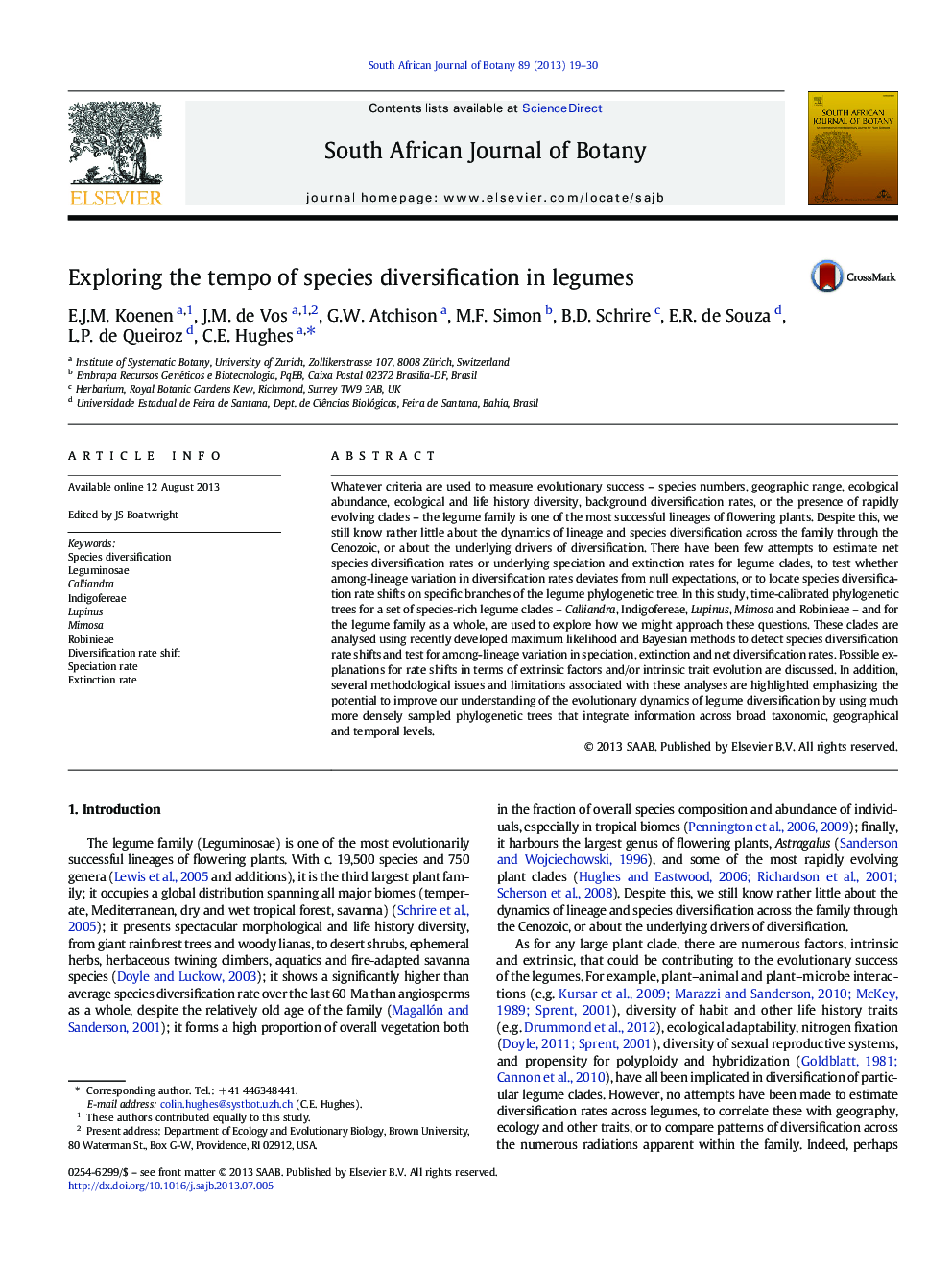| Article ID | Journal | Published Year | Pages | File Type |
|---|---|---|---|---|
| 6378982 | South African Journal of Botany | 2013 | 12 Pages |
â¢We explore the tempo of species diversification across the legume family.â¢We use higher-level and species-level phylogenies to estimate diversification rates.â¢We find significant variation in diversification rate over time and among lineages.â¢Shifts in diversification rate may be driven by many different factors.â¢Several rate shifts are potentially associated with ecological (biome) shifts.
Whatever criteria are used to measure evolutionary success - species numbers, geographic range, ecological abundance, ecological and life history diversity, background diversification rates, or the presence of rapidly evolving clades - the legume family is one of the most successful lineages of flowering plants. Despite this, we still know rather little about the dynamics of lineage and species diversification across the family through the Cenozoic, or about the underlying drivers of diversification. There have been few attempts to estimate net species diversification rates or underlying speciation and extinction rates for legume clades, to test whether among-lineage variation in diversification rates deviates from null expectations, or to locate species diversification rate shifts on specific branches of the legume phylogenetic tree. In this study, time-calibrated phylogenetic trees for a set of species-rich legume clades - Calliandra, Indigofereae, Lupinus, Mimosa and Robinieae - and for the legume family as a whole, are used to explore how we might approach these questions. These clades are analysed using recently developed maximum likelihood and Bayesian methods to detect species diversification rate shifts and test for among-lineage variation in speciation, extinction and net diversification rates. Possible explanations for rate shifts in terms of extrinsic factors and/or intrinsic trait evolution are discussed. In addition, several methodological issues and limitations associated with these analyses are highlighted emphasizing the potential to improve our understanding of the evolutionary dynamics of legume diversification by using much more densely sampled phylogenetic trees that integrate information across broad taxonomic, geographical and temporal levels.
